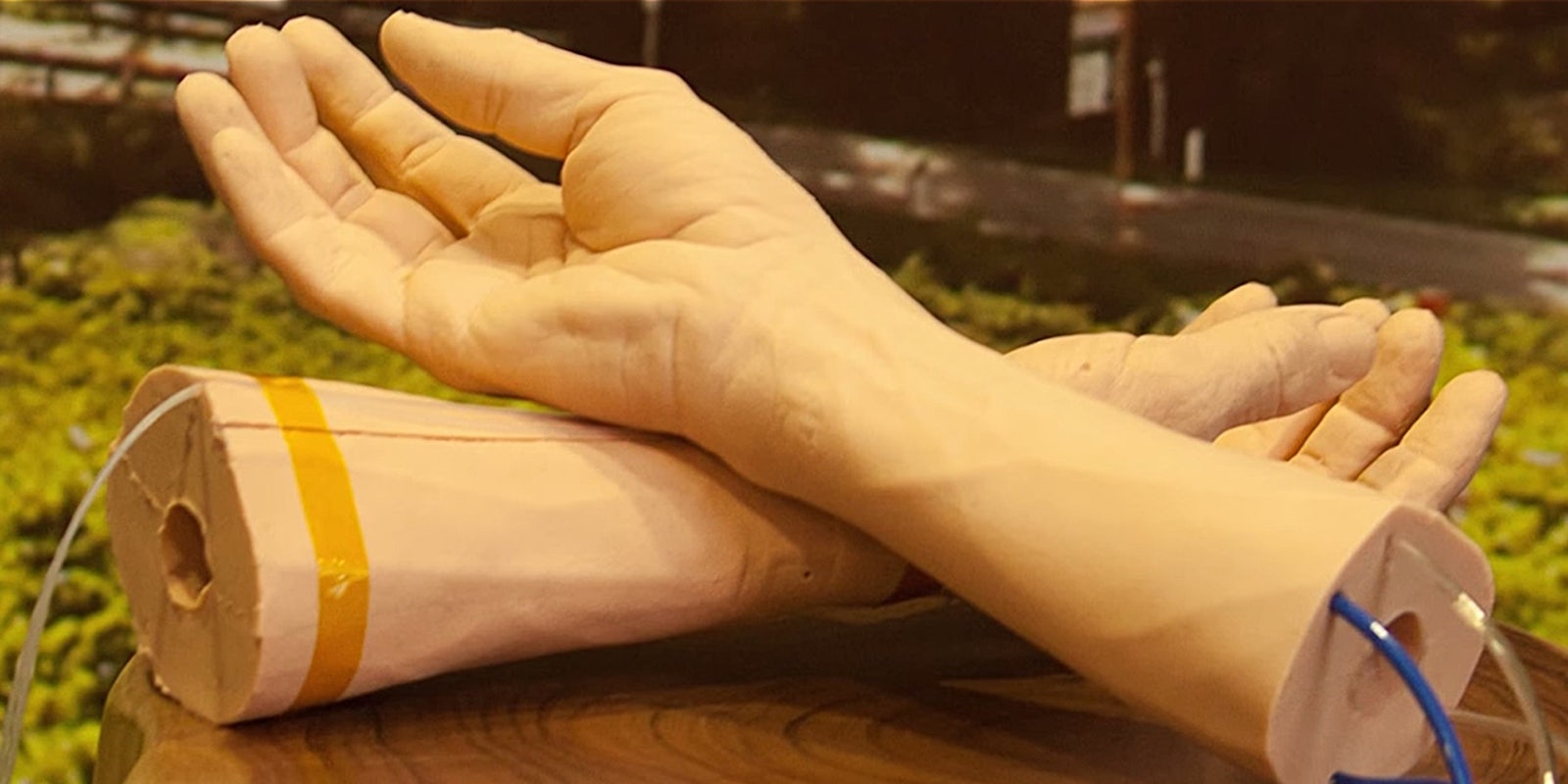Around the globe, scientists are hard at work trying to find the cure for cancer. While some have focused on medical treatments, others are researching ways to detect harmful cancer cells to eliminate the problem as soon as it arises. A team at Google X is doing exactly this, and an inside look at the lab reveals that they’ve begun to create fake human skin to aid in the development of their cancer cell-detecting wristband.
The company announced the project in October 2014, detailing that it would find a way to deploy nanoparticles within the body that would attach themselves to molecules to identify trouble spots that could contain diseases. A smart wristband would keep track of the particles.
The nanoparticles, for instance, would enter the body through a pill that would latch onto cancer cells and then light up. In order to create a useful product, the company created synthetic arms to research how light reacts to different types of skin.
“When they were casting and making these arms, they had to make them out of materials that behave like skin, had the same autofluorescence and biochemical components of real arms,” said Andrew Conrad, head of the Google Life Sciences lab. The lab also had to account for deviations in skin due to differences in ethnicities, skin tones, and thicknesses to best understand how the nanoparticles will react.
Actual human skin was used in the construction of the synthetic version, which Conrad explained is commonly used for medical research.
While other smartphone apps and wearables have attempted to detect and diagnose diseases, they’ve only been able to do so externally through observations in data or detections of other factors that could contribute to sickness. Google X’s efforts to create a disease-detecting wearable, however, show a more scientific and personalized way that wearables can take as time progresses.
Conrad said that Google X is “making good progress,” though they would not say exactly when this technology would become available for use.
H/T The Atlantic | Screengrab via The Atlantic/YouTube


